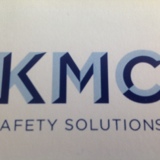Information
-
Document No.
-
Audit Title
-
Client / Site
-
Conducted on
-
Prepared by
-
Location
-
Personnel
-
Address
-
Date & Time
-
Subcontractors on site (list name and trade):
Project Information
-
OSHA 300 forms available, complete and posted in February?
-
OSHA poster(s) posted?
-
Emergency phone numbers posted for nearest medical center, fire, police, hospitals, etc.? Do they have map/ directions to clinic?
-
Safety "Tool-Box" meetings up to date?
-
Subcontractor Safety Programs and Haz-Com Programs received and reviewed?
-
Safety Data Sheets (SDS) in binder, with index and up to date.
-
Adequate First Aid kit(s) & supplies on site?
-
Emergency action plan in place ( ie, evacuation plan, stretcher, etc)?
-
Certified CPR/ First Aid person on site?
-
Work areas properly signed and barricaded?
-
Potable water and toilet facilities provided?
Housekeeping; Subpart C
-
Material storage and staging neat and not a hazard?
-
General neatness of work area?
-
Projecting nails removed or bent over?
-
Waste containers provided and used?
-
Passageways, walkways, stairs and floor clear?
-
Adequate ventilation in work area?
-
Adequate lighting in the work area?
-
Electrical cords and welding leads off the floor?
Fire Prevention; Subpart F
-
Flammable liquid containers properly labeled?
-
Storage tanks properly vented?
-
Flammable/Combustible material spills cleaned up immediately?
-
Flammable storage tanks grounded/bonded?
-
Propane/Butane tanks properly barricaded and installed?
-
Temporary heating devices installed properly & checked periodically?
-
Adequate clearance to combustible material?
-
Approved safety cans used?
-
Adequate fire extinguishers, checked and accessible?
-
" No Smoking" posted and enforced near flammables?
Electrical; Subpart K
-
Ground fault circuit interrupters being used?
-
Electrical rooms/panels properly secured & labeled when energized?
-
Terminal boxes equipped with required covers?
-
Laser warning signs posted?
Hand, Power & Powder Actuated Tools; Subpart I
-
Operators of powder actuated tools are licensed?
-
Tools inspected periodically for defects and taken out of service?
-
Guards in place on grinders and tools?
-
Hand tools inspected regularly?
-
Right tool being used for job at hand?
Fall Protection; Subpart M
-
Floor hole(s), window opening (s) & exposed edges are protected?
-
Guard rails and cables are in place and secured properly?
-
Employees exposed to 6 foot fall hazards are tied off?
-
Employees have safety harness and used correctly?
-
Employees below are protected from falling objects?
-
If using a Fall Protection Plan for leading edge work is it being used properly (I.e., safety monitor, authorized workers, etc.)?
Ladders; Subpart X
-
Ladders extend 36" above the landing?
-
Ladders are secured to prevent slipping, sliding or falling?
-
Ladders with split or missing rungs are taken out of service?
-
Job built ladders built adequately and checked for defects?
-
No employee stepping on the top two rungs of stepladder?
-
Adequate number of access/egress ladders for the number of personnel on a high rise project?
-
Stepladders used in fully open position?
Scaffolding; Subpart L
-
All scaffolding inspected daily?
-
Tied to structure as required?
-
Erected on sound rigid footing and base plates used?
-
Guard rails, intermediate rails, toe-boards and screens in place?
-
Platform fully decked and planking is sound and sturdy?
-
Platforms solidly, fully planked over?
-
Supports plumb, adequate cross braces provided?
-
Planking is scaffold grade lumber of at least 1,500 fsg?
-
Planking is solid, sturdy & secured from being dislodged?
-
Wheels on rolling towers are locked when being used?
-
Proper access ladder provided?
-
Employees below protected from falling objects?
-
Mud sills being used under base plates on soft soil?
9. Floor & Wall Openings: 1910.23. Walking & Working Surfaces
-
All floor or deck holes are covered or barricaded and marked?
-
Perimeter protection in place?
-
Hole or deck covers are secured?
-
Materials stored away from edge?
10. Trenches, Excavation & Shoring; Subpart P
-
Competent person on hand and inspects trench daily?
-
Excavations are shored, benched, or sloped back?
-
Material/spoil pile stored at least 2 feet from trench?
-
Ladders provided every 25 feet in trench?
-
Excavations over 20 feet in depth have engineer approval?
-
Equipment is a safe distance from edge of trench or excavation?
-
Walkways over trenches adequate and secure?
-
Trenches barricaded or identified?
-
Shoring and sheeting as needed for soil classification and depth?
11. Material Handling; Subpart H
-
Materials are properly stored or stacked?
-
Employees are using proper lifting methods?
-
Tag lines are used to guide loads?
-
Proper number of workers for each operation?
12. Welding & Burning; Subpart J
-
Gas cylinders stored upright?
-
Proper 20 foot separating distance between fuels and oxygen?
-
Shielding utilized to protect passerby's from flash burns?
-
Welders wearing protective leather gear to prevent burns?
-
Burning/welding goggles or shields are used?
-
Fire extinguishers are nearby?
-
Hoses are in good condition?
-
Welding gas cylinders capped when not in use?
-
Carts provided for moving cylinders?
-
Appropriate safeguards against hazards caused by welding, cutting or heating?
13. Cranes; Subpart N
-
Is the crane's annual and/or quadrennial inspection up to date?
-
Operator, Superintendent, and Rigger know the weight of the load to be lifted?
-
Outriggers are extended and swing radius barricade in place?
-
Crane set up level and solid pads under outriggers?
-
Operator is familiar with load charts?
-
Hand signal charts are on crane?
-
Crane Operator's daily inspection logs are up to date?
-
Boom stops provided and adequate?
-
Boom tip painted a contrasting color?
-
Handholds, steps, and anti-skid pads provided for access/egress?
-
Safety latch provided and working properly on the hook?
-
Signalman used when needed?
-
All glass and windows clean and free of cracks?
-
All equipment properly maintained?
-
Employee kept from under suspended loads?
-
Is the crane on a barge? If so, is a 'List' chart on site?
-
Is the crane positively secured to the barge as required?
-
Chains and slings inspected and tagged as required?
14. Concrete Construction; Subpart Q
-
All trucks equipped with back up alarms?
-
Respiratory protection program in place and followed?
-
Employees are protected from cement dust?
-
Employees wearing eye protection?
-
Exposed skin is covered?
-
Pump truck set up level, properly and clear of power lines?
-
All reinforcing steel protected by approved caps or troughs?
-
Runways are adequate?
15. Personal Protective Equipment; Subpart E
-
Dust control measured in place on the project?
-
Adequate footwear being worn?
-
Indoor air quality checked?
-
Effective air pollution controls?
-
Hard Hats being worn?
-
Safety glasses are being worn?
-
Respirators are used when required?
-
Hearing protection being worn when required?
-
Life jackets, safety harnesses , lifelines, and lanyards being used when required?
-
High-Viz/ traffic vests being worn when required?
16. Unsafe Acts or Practices Observed (list):
Additional Information
-
Superintendent Signature
-
Auditor Signature








